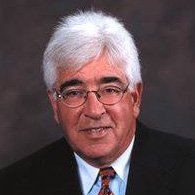A Necessary Discipline
August 15, 2016
I have always been of the belief that if early on – probably by age 30 – you start “saving your age in thousands” in a qualified retirement plan – e.g. 31K at age 31, 32K at age 32, etc. – and you continued to do that for the next 35 years – you would accumulate enough money to comfortably retire at age 65. That amount would easily be in the three and half to $4 million range – even with conservative return expectations of 5%.
Financial Analysis of Retirement Saving
You could then continue to maintain your current lifestyle and work because you want to and not because you have to. I’m speaking from my own personal experience and my observations of successful clients over these many years.
In my opinion, qualified (approved by the US tax code) retirement plans are like the eighth wonder of the world! The amount of the contribution you make to the plan shelters your taxable income for State and Federal. So if your W-2 income was 250K and you made a contribution of 40K, your reported taxable income would be 210K. The money contributed to the plan grows and compounds tax-deferred until the money is withdrawn. You pay ordinary income tax on the amount of the withdrawal when it is made. Contributions that you make for staff are fully tax deductible as a business expense.
If you are lucky enough to have started down this path an early age, you are to be congratulated. Just continue to stay the course. But many doctors were not that fortunate. Maybe they were uninformed – or didn’t have the discipline to save – or simply didn’t have the money available. Now they are age 45 or 50 – finally have more disposable income – and are recognizing they are seriously behind the curve on retirement planning. How do you catch up?
There are two types of qualified plans: defined contribution or defined-benefit. 401(k) plans seem to be the most popular and they are a type of defined contribution plan where employers can match their employees’ contribution up to a certain percentage and also make additional contributions under a profit-sharing feature. For 2016, the maximum allowable employer/employee contribution limit is 53K or 59K for those over age 50.
A defined benefit plan is a cash balance pension plan under which an employer credits a participant’s account with a set percentage of his or her yearly compensation. This can be paired with a 401(k). It often is a fabulous strategy for older doctors much closer to retirement age than their employees. With a favorable census, you have the opportunity to annually put away 100K or more. The plan by law must stay in place for at least three years. When the doctor retires, the plan can be terminated, and the monies that have accumulated for the doctor and for the staff can be moved into an IRA.
The rules and limits on retirement plans change frequently. You need a true expert in this field to advise you. And I would choose this person separate and apart from a financial advisor who would be making investment choices.
According to recent statistical data, if either you or your spouse live to age 65, at least one of you will live to age 90! And just in case you forgot, it takes a lot of money to live well. So do yourself a favor and at least get informed. I highly recommend Seth Larner at Compass Retirement Consulting Group. You can call Seth at 603-661-9330.
No Comments
No comments yet.
RSS feed for comments on this post.
Sorry, the comment form is closed at this time.

